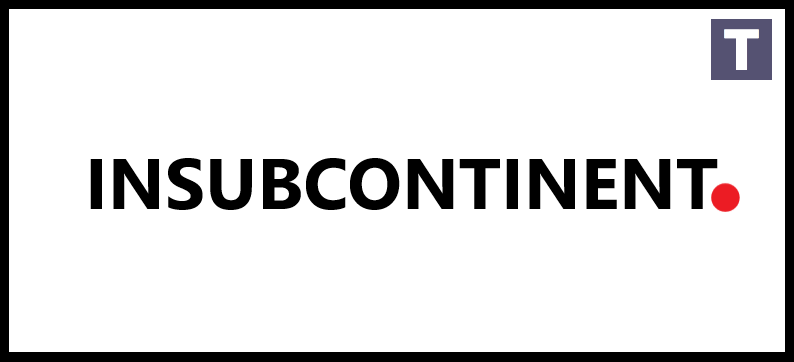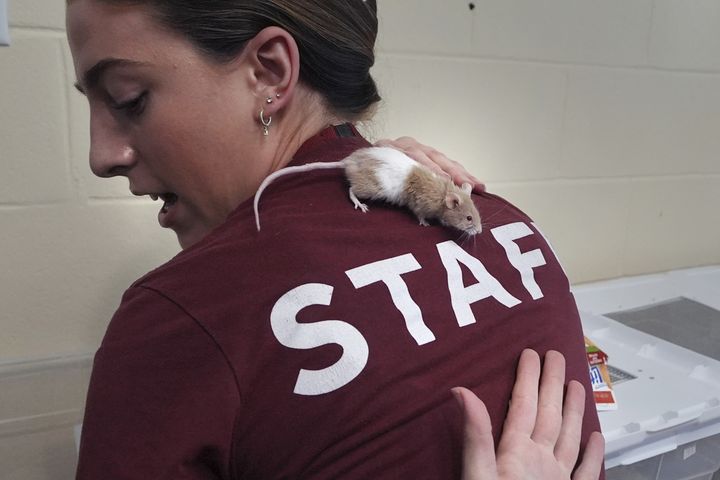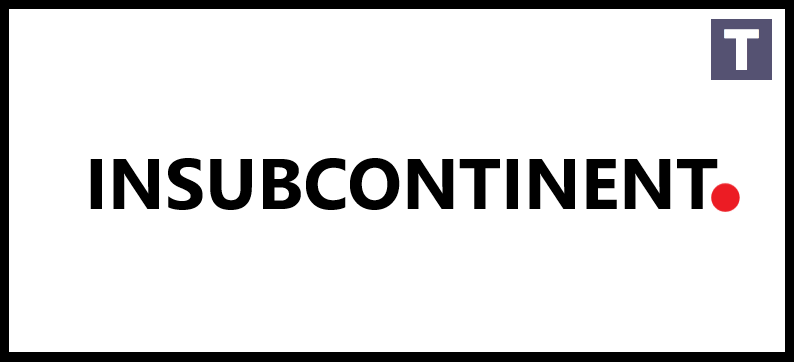Music
Trailers
DailyVideos
India
Pakistan
Afghanistan
Bangladesh
Srilanka
Nepal
Thailand
StockMarket
Business
Technology
Startup
Trending Videos
Coupons
Football
Search
Download App in Playstore
Download App
Best Collections
Technology
Target is lowering the price of its next-day delivery service for household essentials, Target Restock, which will now be free for Target REDcard purchases and $2.99 for all other orders, as the service expands nationwide. Previously, the service cost $4.99 per order & a price meant to rival AmazonPrime Pantry, which today charges a flat shipping fee of $7.99 for orders if customers don&t have the $4.99 monthly subscription that makes orders over $40 ship free.
The price change comes only a year after Target began testing the Restock service in limited markets, and follows the retailerrecent launch of a free Drive Up service for users of its mobile app. The company is also offering free, two-day shipping on hundreds of thousands of Target orders, and is expanding same-day grocery delivery through its Shipt service, as part of its further efforts in challenging the retail giants, Walmart and Amazon.
Unlike Amazon Prime, Target Restock doesn&t require a membership fee & that an angle Walmart adopted with its free shipping program, too.
With Restock, customers have the ability to shop from an assortment of 35,000 household essentials & think, things like baby food, diapers, paper towels, detergent, health and beauty products, and other packaged goods, like peanut butter or snacks.
To use Restock, customers shop online filling their box & up to 45 lbs, which is about the size of a shopping cart & with their selections. They have up until 7 PM Monday through Friday to place the order, then the box is delivered to their door the next day.
Alternately, customers can shop by voice using their Google Home smart speaker or a smartphone with the Google Assistant app installed, as enabled by Targetpartnership with Google on voice-activated shopping.
Target is able to fill orders quickly because itusing its retail stores as the fulfillment centers & it stocks the boxes directly from its store shelves.
The company said in September that Restock thenreached over 70 million customers across the U.S., or about one-fifth of the U.S. population. This morning, the retailer says Restock is broadly available coast to coast, reaching more than 75 percent of the U.S. population.
- Details
- Category: Technology
Read more: Target’s next-day delivery service, Target Restock, launches nationwide with lower fees
Write comment (99 Comments)Vesper Technologies, a new microphone technology developer, has raised $23 million from some of the biggest names in audio technology to finance the commercialization of its piezoelectric microphones.
As audio technology and voice controlled devices become more ubiquitous, manufacturers are hoping to turn to higher performance MEMS (micro-electro mechanical systems) microphones that use acoustic sensors made on semiconductor production lines using silicon wafers.
The technology allows for far smaller microphones that are incredibly sensitive, but the mics themselves typically don&t withstand the wear and tear of harsh environments all that well. Enter Vesper. Itpiezoelectric microphone technology received a full-throated endorsement from Amazon last year (after the company invested through its Alexa Fund).
Traditionally, manufacturers have used arrays of MEMS microphones to pick up sound, but as systems become more complex, they&re more susceptible to breaking down thanks to the sensitivity of the microphone technology. Amazon (and others) are betting that Vesper can solve the problem thanks to its novel approach to manufacturing MEMS using piezo-electric technologies.
The innovation from Vesper basically hinges on the companydesign for a MEMS microphone that doesn&t require a back plate, which lets flexible microphone plates bend and respond to stress without degrading,according to Amazon senior sound engineer, Dave Berol.
Piezoelectric MEMS design replaces the diaphragm and back plate with flexible alternatives that result in a waterproof, dustproof, particle-resistant, and shockproof microphone that requires no workarounds to be used in high-reliability arrays.

According to Yole Developpement, the MEMS and sensor market will reach $66 billion by 2021. Vesper Technologies chief executive Matt Crowley, thinks his company can command a huge share of that market.
&Our vision is for Alexa to be everywhere, and that means devices need to be built with durable, high-quality components that stand up to the demands of many different environments, especially on-the-go scenarios that require better power efficiency,& said Paul Bernard, director of the Amazon Alexa Fund, in a statement. &Vesper has become further embedded in the Alexa community through its integrations with various development kits and integrated solutions for Amazon AVS, and this follow-on investment is a testament to their continued momentum.&
Crowley was working at a company making MEMS with quartz crystals for clocking, but the clock market wasn&t so appealing back in 2012, so the serial entrepreneur began looking at other opportunities.
&We thought the microphone was going to be a growth market back in 2012,& Crowley recalled. So he began looking for technologies that could compliment the manufacturing work his company was doing.
Through hours of online research, Crowley came across the NASA-backed work of Bobby Littrell, whohad come up with an entirely new way to build commercially viable piezoelectric microphones.
&I had these piezoelectric manufacturing expertise and i need to find a better product,& Crowley said. &I actually just started looking on the web for a piezoelectric microphone and it was like all roads led to [Littrell]… I read his doctoral thesis and then i actually read his patents and i actually contacted him through LinkedIn.&
Crowley also noted that the lower power demands of piezo electric sensors means that the microphones can enable a broader range of uses. From turning on television using nothing more than a voice command (without the need to touch a remote) to work with doorbells and security cameras and even augmented reality-based &hearables& like those designed by Bose.
Vesper raised its initial capital from Jeff Fagnan Accomplice fund, before getting its first strategic investment from AAC Technologies.
The most recent round was actually led by Madison, Wis.-based American Family Ventures, the investment arm of American Family Insurance, which has built quite an interesting portfolio of hardware and software services companies since its launch eight years ago. Additional institutional venture investors in the Vesper round include Hyperplane, ZZ Capital, and Accomplice.
&People have been trying to make piezoelectric microphones since the 70s,& said Crowley. &The breakthrough was making really thin layers of these piezoelectric technologies and it was Broadcom which was using this stuff…We couldn&t have started this company five years earlier. It had to be now, when the material science wasn&t right where it needs to be.&
- Details
- Category: Technology
Vesper Technologies, a new microphone technology developer, has raised $23 million from some of the biggest names in audio technology to finance the commercialization of its piezoelectric microphones.
As audio technology and voice controlled devices become more ubiquitous, manufacturers are hoping to turn to higher performance MEMS (micro-electro mechanical systems) microphones that use acoustic sensors made on semiconductor production lines using silicon wafers.
The technology allows for far smaller microphones that are incredibly sensitive, but the mics themselves typically don&t withstand the wear and tear of harsh environments all that well. Enter Vesper. Itpiezoelectric microphone technology received a full-throated endorsement from Amazon last year (after the company invested through its Alexa Fund).
Traditionally, manufacturers have used arrays of MEMS microphones to pick up sound, but as systems become more complex, they&re more susceptible to breaking down thanks to the sensitivity of the microphone technology. Amazon (and others) are betting that Vesper can solve the problem thanks to its novel approach to manufacturing MEMS using piezo-electric technologies.
The innovation from Vesper basically hinges on the companydesign for a MEMS microphone that doesn&t require a back plate, which lets flexible microphone plates bend and respond to stress without degrading,according to Amazon senior sound engineer, Dave Berol.
Piezoelectric MEMS design replaces the diaphragm and back plate with flexible alternatives that result in a waterproof, dustproof, particle-resistant, and shockproof microphone that requires no workarounds to be used in high-reliability arrays.

According to Yole Developpement, the MEMS and sensor market will reach $66 billion by 2021. Vesper Technologies chief executive Matt Crowley, thinks his company can command a huge share of that market.
&Our vision is for Alexa to be everywhere, and that means devices need to be built with durable, high-quality components that stand up to the demands of many different environments, especially on-the-go scenarios that require better power efficiency,& said Paul Bernard, director of the Amazon Alexa Fund, in a statement. &Vesper has become further embedded in the Alexa community through its integrations with various development kits and integrated solutions for Amazon AVS, and this follow-on investment is a testament to their continued momentum.&
Crowley was working at a company making MEMS with quartz crystals for clocking, but the clock market wasn&t so appealing back in 2012, so the serial entrepreneur began looking at other opportunities.
&We thought the microphone was going to be a growth market back in 2012,& Crowley recalled. So he began looking for technologies that could compliment the manufacturing work his company was doing.
Through hours of online research, Crowley came across the NASA-backed work of Bobby Littrell, whohad come up with an entirely new way to build commercially viable piezoelectric microphones.
&I had these piezoelectric manufacturing expertise and i need to find a better product,& Crowley said. &I actually just started looking on the web for a piezoelectric microphone and it was like all roads led to [Littrell]… I read his doctoral thesis and then i actually read his patents and i actually contacted him through LinkedIn.&
Crowley also noted that the lower power demands of piezo electric sensors means that the microphones can enable a broader range of uses. From turning on television using nothing more than a voice command (without the need to touch a remote) to work with doorbells and security cameras and even augmented reality-based &hearables& like those designed by Bose.
Vesper raised its initial capital from Jeff Fagnan Accomplice fund, before getting its first strategic investment from AAC Technologies.
The most recent round was actually led by Madison, Wis.-based American Family Ventures, the investment arm of American Family Insurance, which has built quite an interesting portfolio of hardware and software services companies since its launch eight years ago. Additional institutional venture investors in the Vesper round include Hyperplane, ZZ Capital, and Accomplice.
&People have been trying to make piezoelectric microphones since the 70s,& said Crowley. &The breakthrough was making really thin layers of these piezoelectric technologies and it was Broadcom which was using this stuff…We couldn&t have started this company five years earlier. It had to be now, when the material science wasn&t right where it needs to be.&
- Details
- Category: Technology
Instacart, the on-demand grocery delivery platform that finds itself at the center of ever-increasing competition, has today announced that David Hahn will be taking over as Instacart new Chief Product Officer.
Hahn previously served as VP of Product at LinkedIn, after which time he went to Greylock to serve as an entrepreneur in residence, helping portfolio companies think through their products and monetization strategies.
Most recently, Hahn was President and Chief Product Officer at GoFundMe.
Hahn joins Instacart during an interesting time for the grocery space. Online grocery shopping a delivery has reached &a tipping point,& in the words of Hahn, as incumbents like Walmart and Target formulate their own delivery options. Meanwhile, as we all know, Amazon is working to integrate newly acquired Whole Foods into its Prime delivery portfolio.
&Just a few years from now, everyone will get their groceries this way,& said Hahn. &I&m excited to be part of a company leading that change in such a large and important market.&
Hahn said that he&ll be prioritizing a few things as he acclimates to the role, including the front-end product for consumers and back-end products for retailers that help with inventory management.
Indeed, one of the biggest hurdles at Instacart is integrating with dozens of retailers, many of whom use varying inventory management systems, to consistently and accurately list what is available now in stores to Instacart users.
When this information isn&t correct, it sets off a series of events wherein the shopper has to replace ordered items, which could result in a less-than-perfect delivery.
While the task may seem daunting, Hahn is excited to join Instacart at this particular part of its journey.
&Itquite rare to find a business at this particular stage,& said Hahn. &Instacart has reached a super impressive scale with an impressive growth rate, but there is a lot of opportunity ahead and lots of building to do.&
- Details
- Category: Technology
Read more: Instacart names David Hahn as new Chief Product Officer
Write comment (100 Comments)Lerer Hippeau has raised two new funds — $122 million for a sixth fund devoted to seed stage investments, as well as $60 million for a &Select Fund& focused on later-stage deals.
Managing Partner Eric Hippeau said both funds will be used to continue the firmexisting strategy: &We continue to be seed-first investors and New York-first investors. We&re big believers in New York.&
And while Hippeau acknowledged that the New York ecosystem is still be waiting for the kind of massive exit that makes &a lot of people very rich, who will then leave and start their own companies,& he pointed to recent success stories like Oracleacquisition of Moat and Rocheacquisition of Flatiron Health. (Lerer Hippeau invested in Moat but not Flatiron; both are New York-based.)
&Therea huge pipeline in New York of companies that have been valued in the hundreds of millions and in some cases billions of dollars — a lot of them are our companies, but not always,& Hippeau said. &Thatwhere the strength of New York is going to come from in the short term, all of these companies really popping to the surface and adding a few billion dollars of value, one at a time.&
The firm announced its first follow-on fund last year. At the time, Hippeau said it had only raised $28 million so that the two funds could be &synced up,& which is whathappening now.
The first Select Fund was used to make follow-on investments in companies that Lerer Hippeau had already backed at the seed stage, like Allbirds and Casper. That will continue with the new fund, but Hippeau said it could also be used for Series A investments in startups that the firm didn&t back initially, and which might now seem like missed opportunities.
Caitlin Strandberg
Meanwhile, the Lerer Hippeau team has also been growing, with the recent hiring of Caitlin Strandberg (formerly vice president at FirstMark) as principal and Isabelle Phelps as associate, as well as Amanda Mulay as senior talent manager.
&I couldn&t be more excited to join the most active early-stage firm in New York, just as it gets fresh capital,& Strandberg said in an emailed statement. &Lerer Hippeau has built a fantastic reputation as being a hands-on, accessible and helpful investor all while cultivating a powerful and engaged community. I&m looking forward to investing in the next great generation of startups, supporting our existing founders and teams, and continuing to build a great tech ecosystem here in NYC.&
Lerer Hippeau now has around 20 people on the team. And while firms like Andreessen Horowitz (where Mulay used to work) have made their huge support staff a selling point, Hippeau said that at his firm, &We don&t really want to have dozens of people doing this. We want to be very precise and very selective about how can help.&
Still, he said that &the service thatmost in-demand is help with recruiting,& so it made sense to bring on Mulay to help startups hire, and also to help them &set up a proper HR function.&
Lerer Hippeauinvestment team built its reputation in media — Hippeau was formerly CEO at The Huffington Post, Kenneth Lerer cofounded HuffPost and is now chairman at BuzzFeed and Ben Lerer is CEO at Group Nine Media. (The three of them are pictured at the top of this post.) But with the seemingly constant news about digital media layoffs and shutdowns, would Hippeau invest in a media startup today
Actually, the firm did back one such startup recently, podcast network Wondery. But Hippeau said media has &never been more than 10 percent of our portfolio.& (Other recent investments include cryptocurrency wallet Casa and cannabis talent network Vangst.)
&We love media, we continue to look at media companies, but we are relatively selective,& he said.
- Details
- Category: Technology
Read more: Lerer Hippeau raises a new $122M fund, plus $60M for follow-on investments
Write comment (90 Comments)23andMe, Color, and other genomic sequencing startups have exposed demand from consumers for cheap ways to test for potential problems they may have — andAmir Trabelsi hopes to bring that mentality to medical institutions around the world.
Thatthe hope for Genoox, a genomic analysis startup thatgeared toward doctors, clinicians and researchers that hopes to lower the cost of getting data from gene sequencing, and speed that process up, in the same ways that 23andMe and Color have done for consumers. Genoox at its heart is a data science company, taking the raw data from a genome sequencing and figuring out how to convey actionable information to medical professionals — and, hopefully, on a more complete scale than just consumer startups targeting specific health problems.The company said it has raised a $6 million funding round led by Triventures, a healthcare-focused venture firm.
&We want to bring [medical institutions] the ability to run clinical applications and use genomic data part of the clinical routine,& Genoox co-founder Trabelsi said. &We understand the direct-to-consumer market is growing and the demand is growing, but there is a gap in clinical applications. Genomic data is complicated especially when it comes to clinical outcomes — how can you make things more actionable for [professionals], how can you reduce the cost and overhead, and how can you filter out what is relevant and not relevant.&
Trabelsi said the goal is not to just hand a patient information based on their genome, but rather target clinical experts that might be able to use that data and better determine diagnoses for patients. The physician is the one that will have the final say in the decision or diagnosis, and the whole point here is to just take massive amounts of data and figure out a few points that a physician can use in order to make a better judgment call. And beyond that, Genoox can update those doctors as more and more research comes out regarding the potential health complications a patient may have.
Right now Genoox is targeting rare diseases — starting from one launching point, much like Color or 23andMe — but hopes to expand beyond that into other processes like carrier screening or hereditary cancer. This is a strategy that those direct-to-consumer companies are also employing, with Color recently rolling out a test that tries to search for hereditary risk for heart conditions like arrhythmia. As companies get more and more data, they&re able to better sift through a persongenomic information and flag potential aberrations that could signal increased risk for various conditions.
&We see the growing demand for direct-to-consumer, but we&re also seeing more and more clinical practices using genetic data,& Tabelsi said. &Itstill not efficient or 100% there, but I think the next two years we&re going to see dramatically increased use of genetic data of clinical applications or clinical use. Itnot about the tech, which was proven to be powerful by some cases we were able to solve. I think the technology was kind of proven, along the years, and through some papers we published the question was not about the tech but whether the market is here or where are we in using genetic data.&
Genoox, however, is not the only one targeting clinicians with a data-oriented approach to understanding a patientgenome. Sophia Genetics is also looking to use genomic data and physician input to better diagnose patients, and also raised an additional $30 million in September last year. As the cost of gene sequencing continues to decline, more and more companies will be going after it as a data play — whether thatin the consumer or clinician-focused space — and that means Genoox will likely not be alone as it looks to snap up the attention of clinicians and professionals.
- Details
- Category: Technology
Read more: Genoox raises $6M to help physicians better diagnose patients with genomic data
Write comment (100 Comments)Page 5393 of 5614

 18
18










